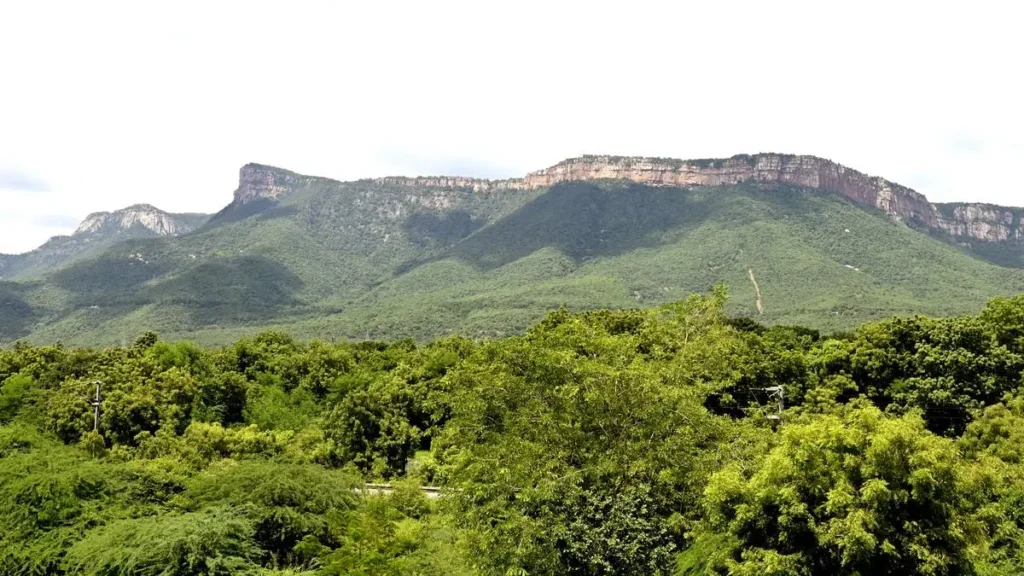India’s rich cultural and natural heritage has earned yet another global recognition. Tirumala Hills in Andhra Pradesh and Erra Matti Dibbalu (Red Sand Hills) near Visakhapatnam have officially been added to UNESCO’s Tentative List of World Heritage Sites in 2025. This significant development puts these two iconic Indian landscapes a step closer to receiving full World Heritage Site status, further cementing India’s place on the global heritage map.
This article explores the history, significance, and potential impact of this recognition on tourism, local communities, and conservation efforts.
What Is the UNESCO Tentative List?
Before a site is inscribed as a UNESCO World Heritage Site, it must first be placed on the Tentative List of the country proposing it. This list acts as a nomination queue, from which sites can be selected for final consideration. Being included is an important step as it highlights the site’s global importance and ensures it gets international attention and support for conservation.
Tirumala Hills: Spiritual and Ecological Treasure

Tirumala Hills, home to the world-famous Sri Venkateswara Temple, is one of the most revered pilgrimage destinations in India. Situated in the Eastern Ghats, the hills are not just a spiritual hub but also a center of rich biodiversity.
Key Highlights of Tirumala Hills:
- Spiritual Significance: The temple attracts millions of devotees every year, making Tirumala one of the most visited religious sites globally.
- Ecological Importance: The hills are part of the Seshachalam Biosphere Reserve, hosting unique flora and fauna, including the endangered Slender Loris and the Red Sanders tree.
- Cultural Heritage: The region has been a center of Vaishnavite culture for centuries and represents a unique blend of architecture, rituals, and festivals.
Inclusion in the UNESCO Tentative List recognizes Tirumala not just as a spiritual destination but also as a site of global cultural and natural significance.
Erra Matti Dibbalu: India’s Red Sand Marvel
The Erra Matti Dibbalu, also known as the Red Sand Hills, are a rare geological formation located near Bheemunipatnam in Visakhapatnam district. These striking red sand dunes are estimated to be over 12,000 years old and are considered one of the most unique natural formations in India.
Key Highlights of Erra Matti Dibbalu:
- Geological Significance: The dunes provide insight into past climatic conditions and sea-level changes, making them invaluable for scientists and researchers.
- Tourist Attraction: Their reddish hue, especially during sunrise and sunset, attracts travelers, photographers, and nature enthusiasts.
- Fragile Ecosystem: Being a sensitive coastal formation, the dunes are vulnerable to erosion and unregulated human activity, making their protection critical.
The UNESCO recognition could play a key role in preserving this geological heritage site while promoting eco-tourism in the region.
Boost for Indian Tourism and Economy
The inclusion of Tirumala Hills and Erra Matti Dibbalu in the UNESCO Tentative List is expected to bring a major boost to tourism in Andhra Pradesh and India as a whole.
- International Tourism: UNESCO recognition often draws global travelers, researchers, and heritage enthusiasts.
- Infrastructure Development: Governments and local authorities typically invest in better roads, facilities, and visitor services to support tourism.
- Employment Opportunities: Increased footfall can create jobs in hospitality, transport, and local crafts.
Cultural and Environmental Impact
While this recognition brings pride and economic opportunity, it also comes with responsibility. These sites must now be preserved with care to maintain their eligibility for final UNESCO inscription.
- Conservation Efforts: Strict guidelines will need to be followed to protect biodiversity, archaeological remains, and geological features.
- Sustainable Tourism: Authorities must ensure that tourism growth does not harm the natural environment or cultural sanctity of these sites.
- Community Involvement: Local communities should be included in decision-making, ensuring they benefit from tourism while helping preserve their heritage.
India’s UNESCO Journey
India already has 42 UNESCO World Heritage Sites, including famous ones like the Taj Mahal, Qutub Minar, and Kaziranga National Park. The addition of Tirumala Hills and Erra Matti Dibbalu to the tentative list reflects India’s ongoing commitment to celebrating and protecting its diverse heritage.
If these sites achieve full World Heritage status, they will join a prestigious group and receive international funding, expertise, and visibility for long-term preservation.
Government and Public Response
Government officials, historians, and environmentalists have welcomed the move, calling it a historic milestone for Andhra Pradesh. Local residents and devotees are hopeful that this recognition will bring global fame while improving infrastructure and conservation efforts in the region.
Conclusion
The addition of Tirumala Hills and Erra Matti Dibbalu to UNESCO’s Tentative List is not just a symbolic achievement but a major step toward global recognition of India’s cultural, spiritual, and natural wealth.
For Tirumala, it reaffirms its position as a center of devotion and ecological significance. For Erra Matti Dibbalu, it could mean much-needed protection and international attention. Together, these sites represent India’s deep connection with nature, spirituality, and history — a legacy that deserves to be celebrated and safeguarded for generations to come.

